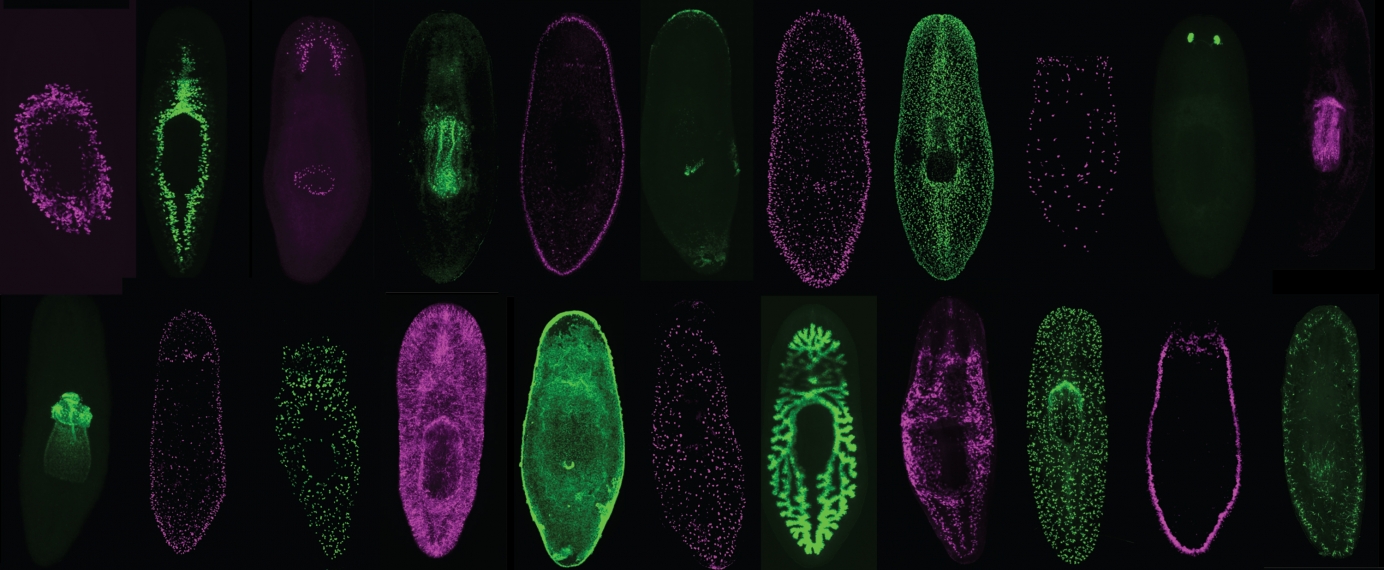Regenerative Medicine and Cell Dynamics

Whitehead Member Peter Reddien has created a transcriptome atlas for the planarian flatworm.
Christopher Fincher/Whitehead Institute
Humans begin as one cell—packed full of organelles and biological mechanisms—which divides countless times to create bodies comprising trillions of cells. Whitehead Institute researchers are investigating exactly what happens when cells divide and when they differentiate into specific cell types; and what happens when those processes go awry and cause disease. They are pioneers in understanding how stem cells function and how they can be used for research. They are also striving to understand how certain species and certain human organs are able to regenerate easily when injured. In this way, they are laying the foundation for development of methods to halt tumor growth, rejuvenate damaged heart muscle, and reverse spinal cord injury.
For example, Peter Reddien studies how regenerative organisms regrow missing body parts, identifying the specific cellular, genetic, and molecular events that control regeneration. His lab has discovered that planarian flatworms—which can be cut into pieces and each piece will regenerate into a complete animal—replaces missing body parts by using specialized cells called neoblasts guided by positional information signals from muscle. Iain Cheeseman studies the process of chromosome segregation during cell division, focusing particularly on the kinetochore, which helps ensure each daughter cell receives a proper set of chromosomes. He has helped identify dozens of the kinetochore’s molecular components and their specific roles; and because some kinetochore proteins are implicated in leukemia and other malignancies, his discoveries may help explain how errors in chromosome segregation lead to cancer. Pulin Li is investigating how circuits of interacting genes enable individual cells to engage in multicellular functions such as self-organizing into complex tissues. By combining approaches from synthetic biology, developmental biology, biophysics, and bioengineering, she is building a fundamental understanding of tissue development and creating new approaches to tissue engineering—both of which could be the basis for new strategies to repair damaged tissues.
Rudolf Jaenisch is a pioneer in reprogramming differentiated cells into induced pluripotent stem cells and them prompting them to become specific cell types—which allows scientists to study disease in conditions mimicking cells’ natural environment. His studies are leading to a deeper understanding of a wide range of medical conditions—and to new strategies to prevent and treat these conditions. Yukiko Yamashita studies how stem cells are renewed, in normal and diseased contexts. She seeks to understand the process by which a stem cell divides into one daughter cell that retains pluripotency and one that differentiates into a specific kind of cell—because, when this process goes awry, the result can be cancer or a depletion of the stem cell pool necessary for long-term health. Ruth Lehmann, an internationally renowned germ cell biologist, is investigating how the specialized cells that give rise to eggs and sperm continue producing healthy daughter cells while other cell lines die off. Her studies are helping answer important questions about the DNA repair process and how germ cells avoid deleterious genetic mutations through many cell generations.
Learn more about our work on Development & Regeneration and Cell Dynamics—as well as related research in the realms of Cancer, Metabolism, Genetics & Genomics, Nervous System Development & Function, and Protein Form & Function.